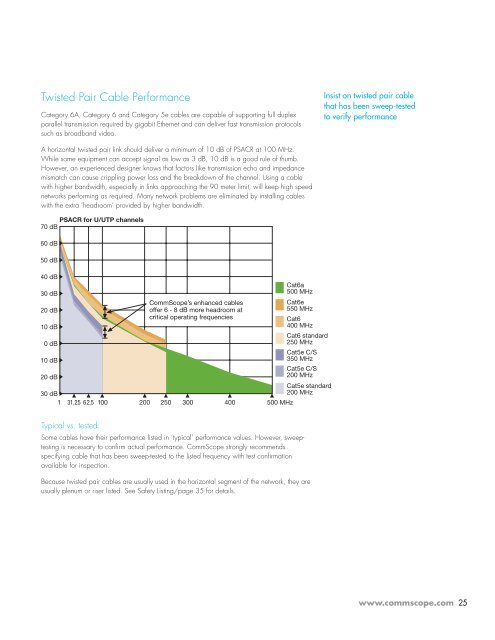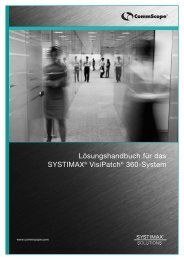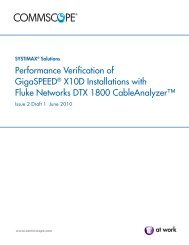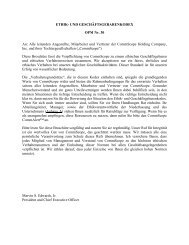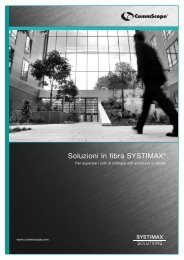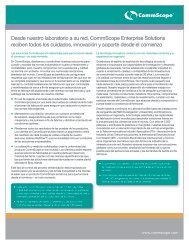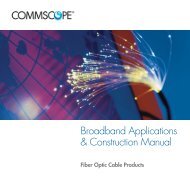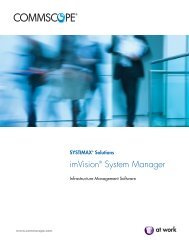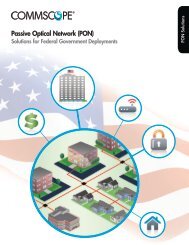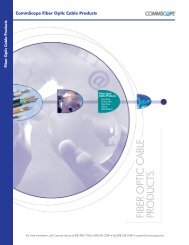Enterprise Design Guide - Public - CommScope
Enterprise Design Guide - Public - CommScope
Enterprise Design Guide - Public - CommScope
Create successful ePaper yourself
Turn your PDF publications into a flip-book with our unique Google optimized e-Paper software.
Twisted Pair Cable Performance<br />
Category 6A, Category 6 and Category 5e cables are capable of supporting full duplex<br />
parallel transmission required by gigabit Ethernet and can deliver fast transmission protocols<br />
such as broadband video.<br />
A horizontal twisted pair link should deliver a minimum of 10 dB of PSACR at 100 MHz.<br />
While some equipment can accept signal as low as 3 dB, 10 dB is a good rule of thumb.<br />
However, an experienced designer knows that factors like transmission echo and impedance<br />
mismatch can cause crippling power loss and the breakdown of the channel. Using a cable<br />
with higher bandwidth, especially in links approaching the 90 meter limit, will keep high speed<br />
networks performing as required. Many network problems are eliminated by installing cables<br />
with the extra ‘headroom’ provided by higher bandwidth.<br />
PSACR for U/UTP channels<br />
70 dB<br />
60 dB<br />
50 dB<br />
40 dB<br />
30 dB<br />
20 dB<br />
10 dB<br />
0 dB<br />
-10 dB<br />
-20 dB<br />
-30 dB<br />
1<br />
<strong>CommScope</strong>’s enhanced cables<br />
offer 6 - 8 dB more headroom at<br />
critical operating frequencies<br />
31.25 62.5 100 200 250 300 400 500 MHz<br />
Cat6a<br />
500 MHz<br />
Cat6e<br />
550 MHz<br />
Cat6<br />
400 MHz<br />
Typical vs. tested<br />
Some cables have their performance listed in ‘typical’ performance values. However, sweeptesting<br />
is necessary to confirm actual performance. <strong>CommScope</strong> strongly recommends<br />
specifying cable that has been sweep-tested to the listed frequency with test confirmation<br />
available for inspection.<br />
Cat6 standard<br />
250 MHz<br />
Cat5e C/S<br />
350 MHz<br />
Cat5e C/S<br />
200 MHz<br />
Cat5e standard<br />
200 MHz<br />
Because twisted pair cables are usually used in the horizontal segment of the network, they are<br />
usually plenum or riser listed. See Safety Listing/page 35 for details.<br />
Insist on twisted pair cable<br />
that has been sweep-tested<br />
to verify performance<br />
www.commscope.com 25


